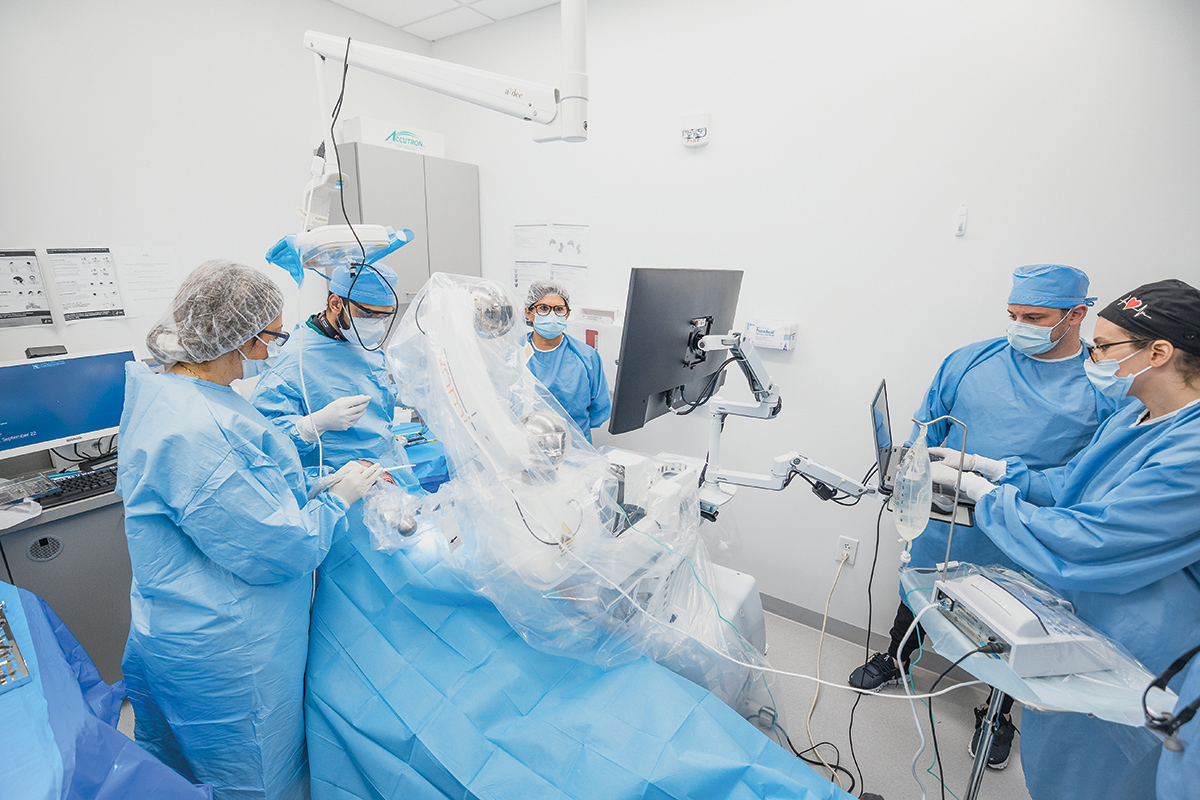lens
Precision Treatment
Dental school is using robotic technology to enhance care and education
 PHOTO: MATT SHIFFLERThe robotic surgery team at the School of Dental Medicine Department of Periodontics placing dental implants using the Yomi robotic navigation system.
PHOTO: MATT SHIFFLERThe robotic surgery team at the School of Dental Medicine Department of Periodontics placing dental implants using the Yomi robotic navigation system.The Case Western Reserve University School of Dental Medicine moved further into a digital frontier last fall when it began using robotic technology to improve the implant surgery experience for patients, students and residents in training.
“I’m very much into robotic technology for implant dentistry because this is the ultimate technology available,” said Gian Pietro Schincaglia, DDS, professor, chair of periodontics and director of the Graduate Periodontics Clinic, which is using the implant robotic system, called Yomi.
The system is part of a larger focus at the school to educate students and residents in the digital world—whether teaching anatomy with the Microsoft HoloLens mixed-reality technology or clinical skills with the latest digital tools. The school is also prioritizing treatment methods that require fewer appointments and result in faster healing for patients.
Surgeons and school residents in surgical training work with the Yomi system for placing implants. The surgical plan is set in advance from a 3D scan of a patient’s jaw, determining the exact angles and depths needed to drill into the bone to insert the implants. A robotic arm controls the final position of the drills and of the implant, preventing any incorrect movements by the surgeon during the procedure.
“This guarantees a higher level of accuracy and safety, compared to previous technology,” Schincaglia said.
Neocis, a Miami-based company, developed Yomi. It is the only robotic system for dental-implant surgery approved by the U.S. Food and Drug Administration.
When the dental school began working with the system, Schincaglia said, just three other academic institutions were using it as well. He launched the system’s use at one of them—West Virginia University—before moving to CWRU and bringing the technology here.
Muhammad Sohail, DDS, chief resident in periodontics, has used the robotic arm for more than 50 implants.
“It makes your implant procedures much more accurate and with much less stress than what you normally have when you’re doing a surgery,” Sohail said.
Although new technology can sometimes be met with skepticism, Sohail said none of his patients has been apprehensive about having a robot arm in their mouth during surgery.
“Once you educate the patient[s] about it,” Sohail said, “they actually get very interested in getting to know more about it and wanting to be treated with it.”





